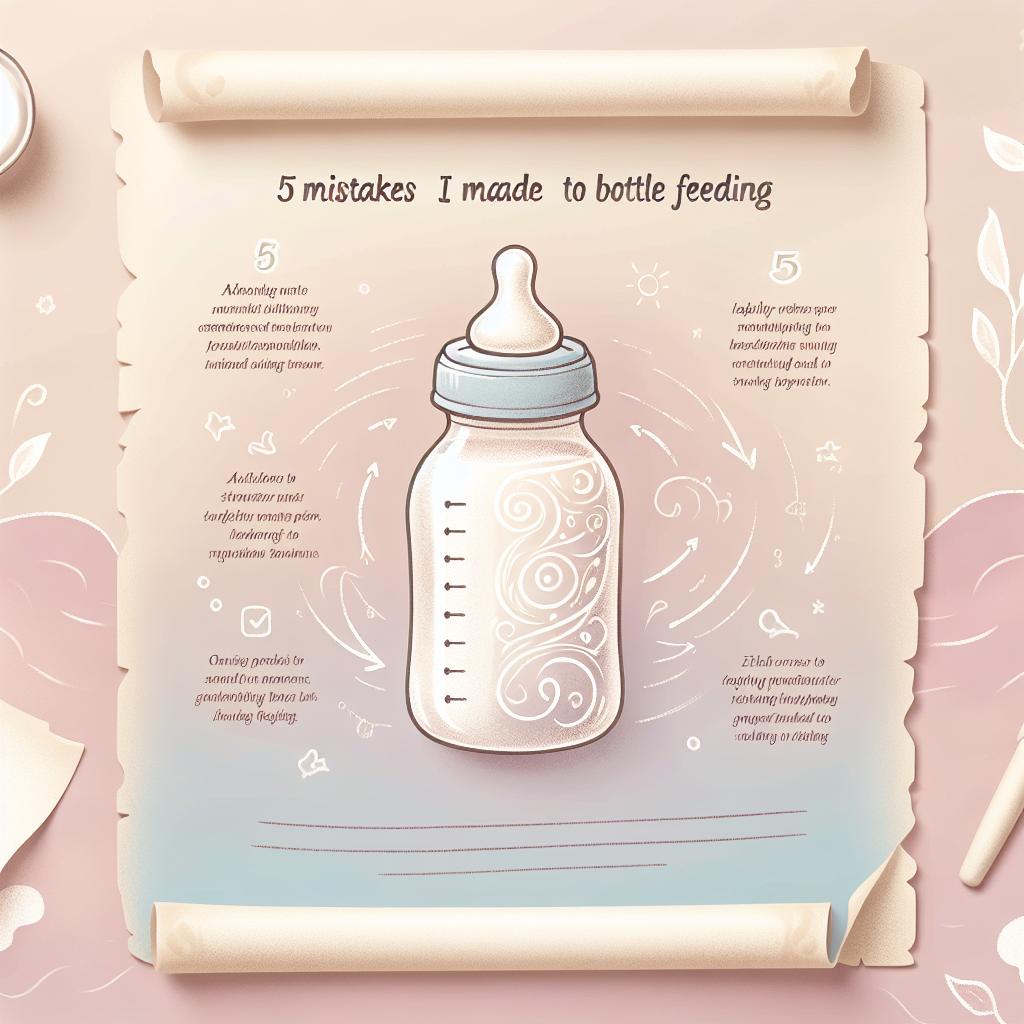Understanding Common Transition Errors: Mistakes I Made Switching to Bottle Feeding
Transitioning your baby from breastfeeding to bottle feeding can be a challenging journey. It requires patience, trial and error, and understanding. In this blog post, we’ll discuss the most common bottle switch mistakes I made along with tips on how to avoid them.
Mistake #1: Not Considering the Type of Bottle
One of the first mistakes I made was neglecting to consider the type of bottle I was using. Not all bottles are created equal, and some are better designed to meet the needs of breastfed babies. A wrong choice of bottle could lead to your baby not latching properly or experiencing uncomfortable gas. For more information on choosing the best bottle for your breastfed baby, you can visit this helpful guide.
Mistake #2: Changing Too Quickly
Another common transition error is making the switch too rapidly. Babies need time to adjust to new feeding methods and can react negatively if pressured. It’s essential to take it slow, introducing the bottle gradually while continuing to breastfeed, as recommended in this insightful article.
Mistake #3: Ignoring Signs of Discomfort
During this transition, it’s crucial to monitor your baby’s reactions. Changes in feeding methods can sometimes lead to discomfort or health issues. My mistake was not paying enough attention to these signs. Being aware of common breastfeeding problems, as listed by the NHS, can prevent this mistake.
Mistake #4: Overlooking the Formula
- Just as the type of bottle matters, so does the type of formula. Not all formulas are designed the same way, and your baby’s nutritional needs should guide your choice.
- The NHS provides great information about different kinds of baby formulas and how to choose the best one for your little one.
Mistake #5: Missing Out On Professional Advice
Finally, one of the most significant mistakes was not seeking professional advice when I encountered problems. Whether it’s a paediatrician or a lactation consultant, professionals can provide insights and solutions that can make the transition smoother. According to a report on The Guardian, professional medical advice can sometimes mean the difference between life and death.
Through this journey, bearing in mind that it’s perfectly normal to make mistakes could help you keep stress levels down. The key is to learn from these mistakes and strive to make the transition as smooth as possible for you and your baby. For more tips and tricks on transitioning from breastfeeding to bottle-feeding, check out this comprehensive guide.
Mistake #6: Compromising Establishing Bond
Switching from breastfeeding to bottle-feeding does not mean you have to compromise the bond that breastfeeding establishes. I made the mistake of overlooking this vital factor in the beginning. However, I discovered later you can maintain your bonding time by holding your baby close during bottle feedings, practicing skin-to-skin contact, and maintaining eye contact. According to Health Partners, these techniques can aid in maintaining the close bond that is often associated with breastfeeding.
Mistake #7: Ignoring Baby’s Feeding Schedule
While breastfeeding, babies typically feed on demand. However, when switching to bottle-feeding, I neglected to stick to my baby’s usual feeding schedule. This change caused my baby to feel uncomfortable and dissatisfied. Hence, it’s vital to maintain your baby’s normal feeding schedule even after transitioning to bottle-feeding to maintain a sense of routine and reassurance.
Mistake #8: Neglecting Proper Bottle Cleaning
When breastfeeding, there is less concern about sanitization as compared to bottle feeding. A significant mistake I made was not immediately realizing the importance of properly cleaning and sterilizing the bottles and teats. Dirty bottles can harbor dangerous bacteria, which can cause your baby to get sick. For safe cleaning practices, this article on NHS can be helpful.
Mistake #9: Taking Away Comfort Too Soon
Breastfeeding offers comfort for many babies and taking this away too soon can lead to distress. I learned this mistake the hard way when my baby became more fussy after transitioning. One good way to offer comfort during this transition is to present the bottle when the baby is already in a relaxed state. This method may reduce resistance to the bottle and ease the transition as suggested by Quora.
Mistake #10: Not Learning Proper Bottle Feeding Techniques
- Another mistake many people make, including myself, is not learning proper bottle-feeding techniques. Holding the baby at an incorrect angle or not burping the baby correctly can lead to discomfort or gas, which can then lead to a sour bottle feeding experience.
- It’s essential to learn and understand the correct strategies for bottle feeding. The La Leche League international has useful resources on improving feeding techniques.
Understanding these common bottle switch mistakes and taking active steps to avoid them can help make the transition smoother and less stressful for both you and your baby. In my experience, it did take patience, time, and several trials before finding a process that worked.
In your journey, be kind to yourself, and bear in mind that making mistakes is okay. Each mistake is a learning opportunity that brings you one step closer to successfully transitioning your baby to bottle feeding.

